The painter of Mona Lisa was not only a genius with pure artistic sensibilities but also a man with his flurry of ‘hip’ designs that were far ahead of their time. Yes, we are talking about the conceptual inventions of Leonardo da Vinci (1452 – 1519 AD), and how they incredibly mirror many of our modern-day contraptions. So, without further ado, let us take a gander at the eight amazingly inventive designs of Leonardo da Vinci that have modern-day counterparts.
Note* – Most of these ‘inventions’, unfortunately, remained conceptual in their scope – with detailed sketches and notes in the renowned Codex Atlanticus.
Contents
The ‘Flying Machine’
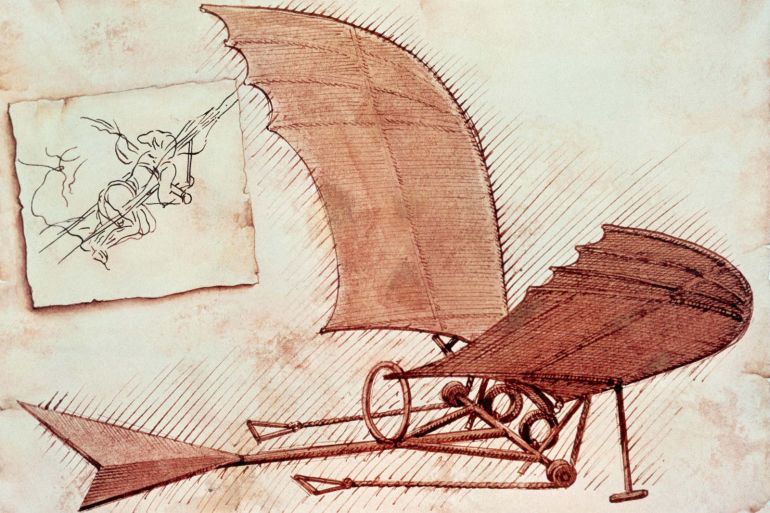
Arguably the most famous of da Vinci’s hacks’, the flying machine (or the ‘ornithopter‘) was basically envisioned as a wooden frame with two extending wings that amounted to a wingspan of more than 33 ft. This core frame was to be built from lightweight yet sturdy pine wood while being draped in raw silk to add to the ‘feathery’ equation.
As for the powering mechanism, the conceptual design boasted of a rod-and-pulley system that would have controlled the wings while the pilot put his effort into the pedals (bolstered by a hand crank that could increase the energy output). The pilot could also steer the contraption via a headpiece – an unenviable task as demonstrated by one of the levels in the video game Assassins Creed: Brotherhood.
In any case, what separated the Flying Machine from modern aircraft is its lack of an engine mechanism. So, in other words, while the ornithopter could have flown in mid-air, it would have been certainly difficult to first get the machine off the ground.
The Organ Gun
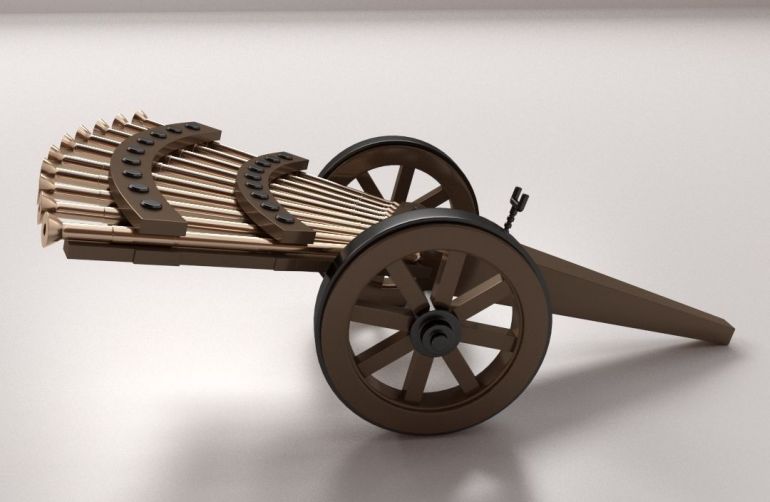
During the late 15th century, canons were mostly of rudimentary make with their antediluvian mechanism allowing for a very slow rate of fire. Leonardo da Vinci did observe the tactical predicament, and as a solution contrived the 33-barreled organ.
In essence, the multi-barreled device was envisioned to have 33 different small-caliber guns that were to be arranged along 3 rows (with 11 guns each). This so-called ‘organ’ (resembling the pipes of a musical organ) was then to be supported upon a revolving platform that could also be mobile due to its wheels on each side.
It is rather interesting to know that the seemingly similar volley gun was actually in usage in variant forms even before the birth of da Vinci (like the ‘Ribauldequin‘ used during the Hundred Years War). However, da Vinci’s 33-barreled organ was more akin to the 19th-century machine gun models – like the Gatling gun that boasted of higher rates of fire without the problem of the barrel getting overheated.
Parachute
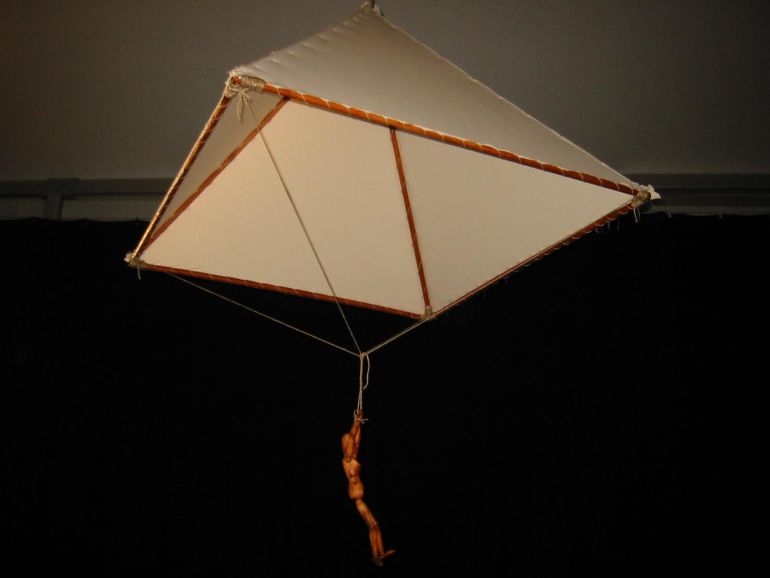
In terms of history, the physical variety of parachutes cannot be attributed as one of Leonardo da Vinci’s inventions – with the contrivance credentials belonging to one Sebastien Lenormand in 1783. However, da Vinci did make a conceptual design of the ‘parachute‘ almost three centuries before Lenormand, with his idea entailing a triangular-shaped canopy made of linen that would presumably cover a light wooden frame. According to one of the descriptions below his sketches –
If a man has a tent made of gummed linen cloth of which the apertures (openings) have all been stopped up, and it is twelve braccia (around 23 ft) across and twelve in-depth, he will be able to throw himself down from any great height without suffering any injury.
Quite interestingly, a man named Adrian Nichols decided to test out da Vinci’s conception by crafting an actual physical version in accordance with the 15th-century renderings. The resultant contrivance was successfully made airborne in 2000, with Nichols singing praises of its efficiency in dealing with air resistance.
Self-Propelled Cart
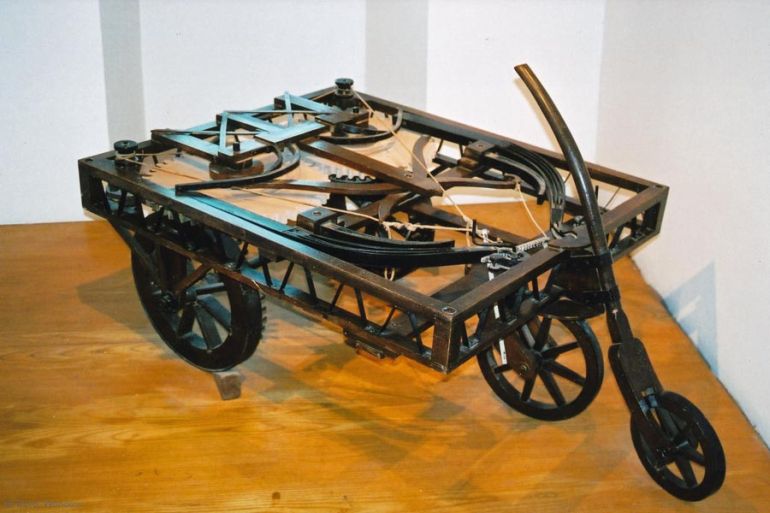
Possibly a precursor to our modern-day automobiles, the Self-Propelled Cart is also unique due to its ‘robotic’ credentials that pertained to pre-determined steering features. To that end, the advanced cart was envisaged to be powered by coiled springs, while also having a credible steering mechanism, balance wheel (also used in clocks), along with a braking system.
So, when the brakes were released, the cart sprung forth – with the vehicle’s direction being controlled by the programmed steering that could lead the cart at various angles.
Once again, the Self-Propelled Cart was re-imagined in our contemporary times, by some folks over at Italy’s Institute and Museum of the History of Science. The machine was created by basing its design on da Vinci’s original sketches, and the outcome was pretty surprising. The researchers found out that the furnished vehicle looked much like the Mars Rover, while its navigation system worked according to its conceptualized origins.
Humanoid Robotic ‘Knight’
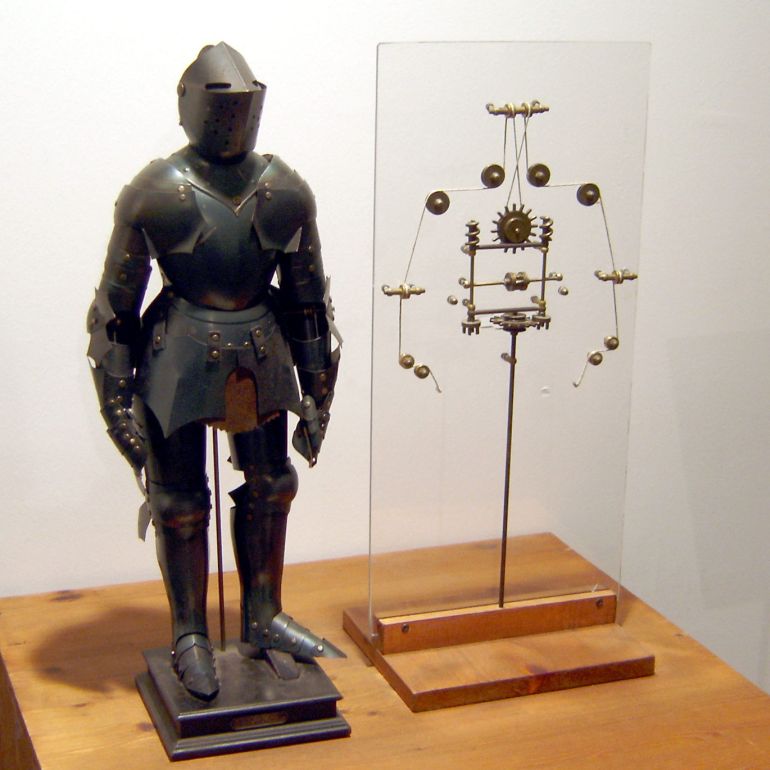
Clad in heavy German-Italian medieval armor, the mechanical knight was conceived in 1495 as a humanoid automaton. We say ‘conceived’ because the machine with its internal system of pulleys, gears, levers, and cranks, MIGHT have been the very first human-like robot actually created in the history of mankind – by none other than da Vinci himself.
According to some accounts, this so-called robot was ceremoniously displayed at the court of Milan during a gala hosted by the city’s Duke Ludovico Sforza.
Fueled by these internal mechanisms (distributed evenly across the torso and the body’s lower part), the Robotic ‘Knight’ supposedly had the capacity to both sit-down and stand up, while also showing its ability in lifting its visor and even move its head.
And quite intriguingly, the famed roboticist Mark Rosheim (known for his contributions to NASA and Lockheed Martin) successfully built a version of this humanoid automaton in 2002 by making use of da Vinci’s drawings, discovered in the 1950s. And, the result aptly demonstrated the effectiveness of the original design with the robot being able to fluidly move and wave.
Armored Car
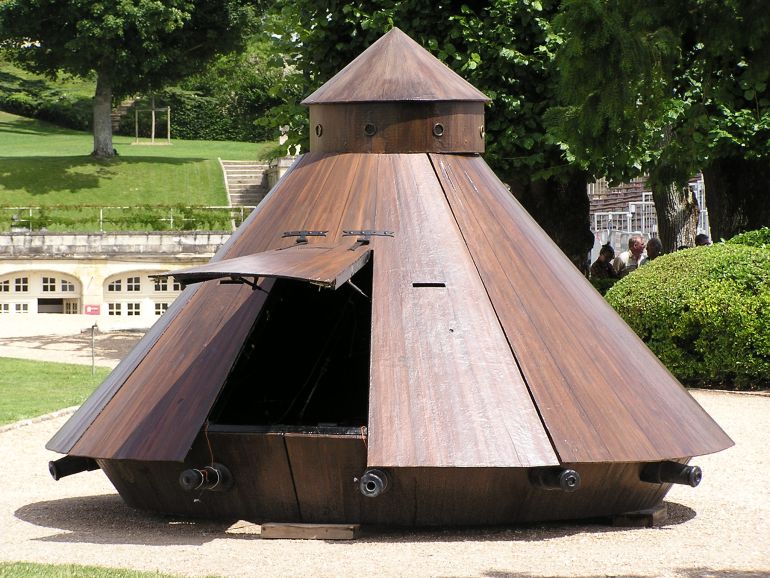
If the Self-Propelled Cart is the precursor to modern automobiles, the Armored Car is surely the forerunner to contemporary military tanks. Designed as a massive circular platform reinforced with sturdy metallic plates, and driven by wheels – the Armored Car was envisaged to have a crew of 8 members inside the hull.
Additionally, the platform would carry an array of light cannons, with the gunner having 360 degrees field-of-view that was to be aided by a sighting turret at the top.
Suffice it to say, the entire contraption was to be powered by humans – with the men inside working upon the cranks that would make the wheels spin. Leonardo da Vinci even thought of including horses in the cranking mechanism, but later thought against it due to the uncontrollable nature of animals.
But the most baffling part about the Armored Car is the arrangement of the cranking systems that seemingly go in opposite directions – thus ultimately making the vehicle immobile. According to some historians, this may have been an intentional flaw, since the ‘pacifist’ da Vinci didn’t want his war machines to be developed further for actual military actions.
Portable Revolving Bridge
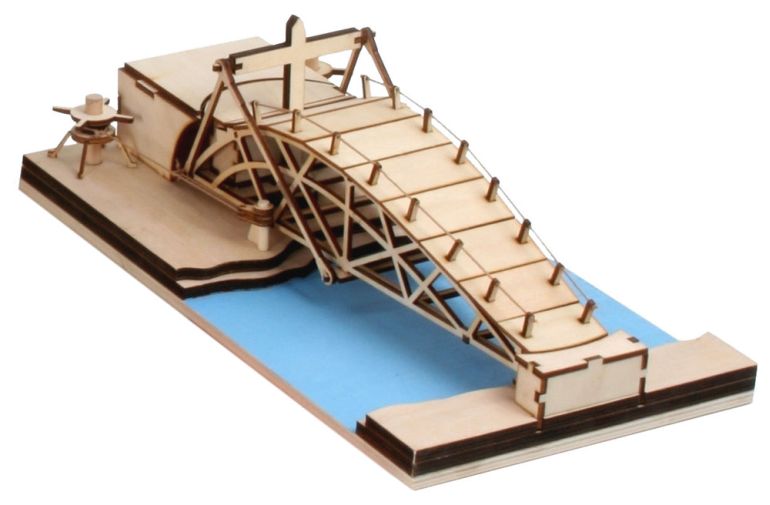
Since we talked about mobility (or lack thereof) in the previous entry, one of da Vinci’s inventions entailed a revolving bridge that can be packed and hauled by armies on the move. Designed once again for his wealthy patron Ludovico Sforza (the Duke of Milan), the main advantage of this portable contrivance was that it could be swung over water bodies (like rivers and streams), thus making it easier for soldiers to make their crossing while making swift marches.
In technical terms, the bridge was envisioned to have a counterweight tank that would make the structure balanced on both sides. As for its ease of transportation, the design was contrived to have wheels and a rope-and-pulley system for effective deployment in a short span of time.
Diving Suit
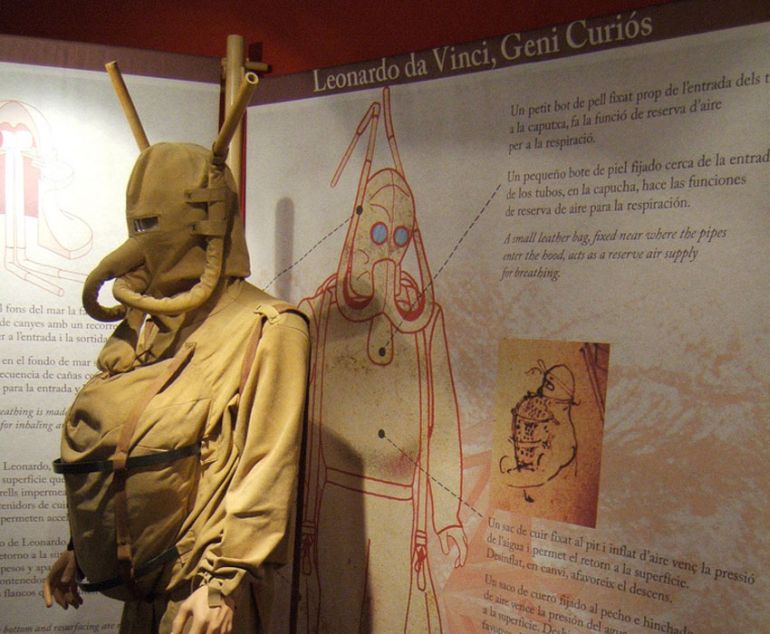
Perhaps the least known of all the da Vinci inventions, the scuba gear was conceptually developed when the great inventor was working on a project in Venice. The diving gear was also envisaged as military equipment which could be used for marine-based surprise attacks on enemy vessels.
To that end, the diving suit was made from leather, and it had a special mask with two tubes (tethered to the nose area) that were connected to a cork diving bell that floated above water.
Interestingly, the diving gear was imagined in such a manner that the mask would have an additional inflatable balloon-like device that would aid the diver to submerge or come up above the water level. This nifty gizmo was accompanied by a separate compartment in the suit that would further allow the diver to urinate in case he is working on a long underwater mission.
Featured Image Source: Wikimedia Commons
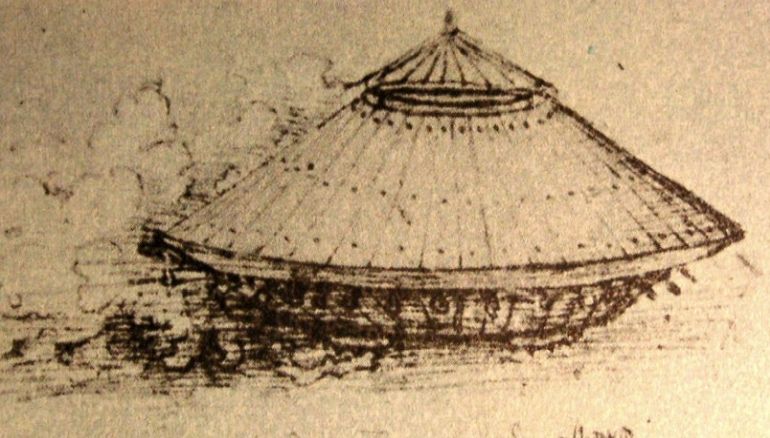
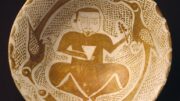

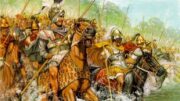

Be the first to comment on "Remarkable Designs Of Leonardo Da Vinci"